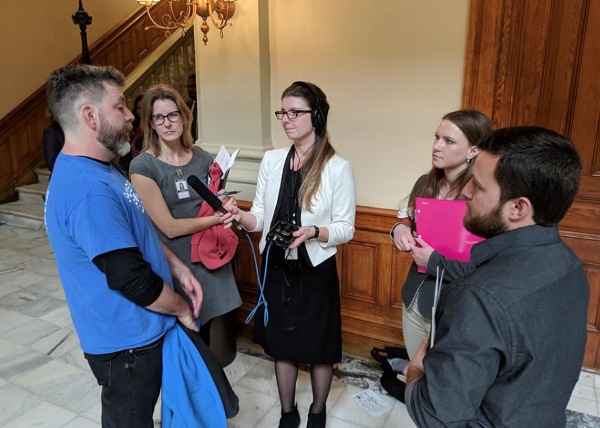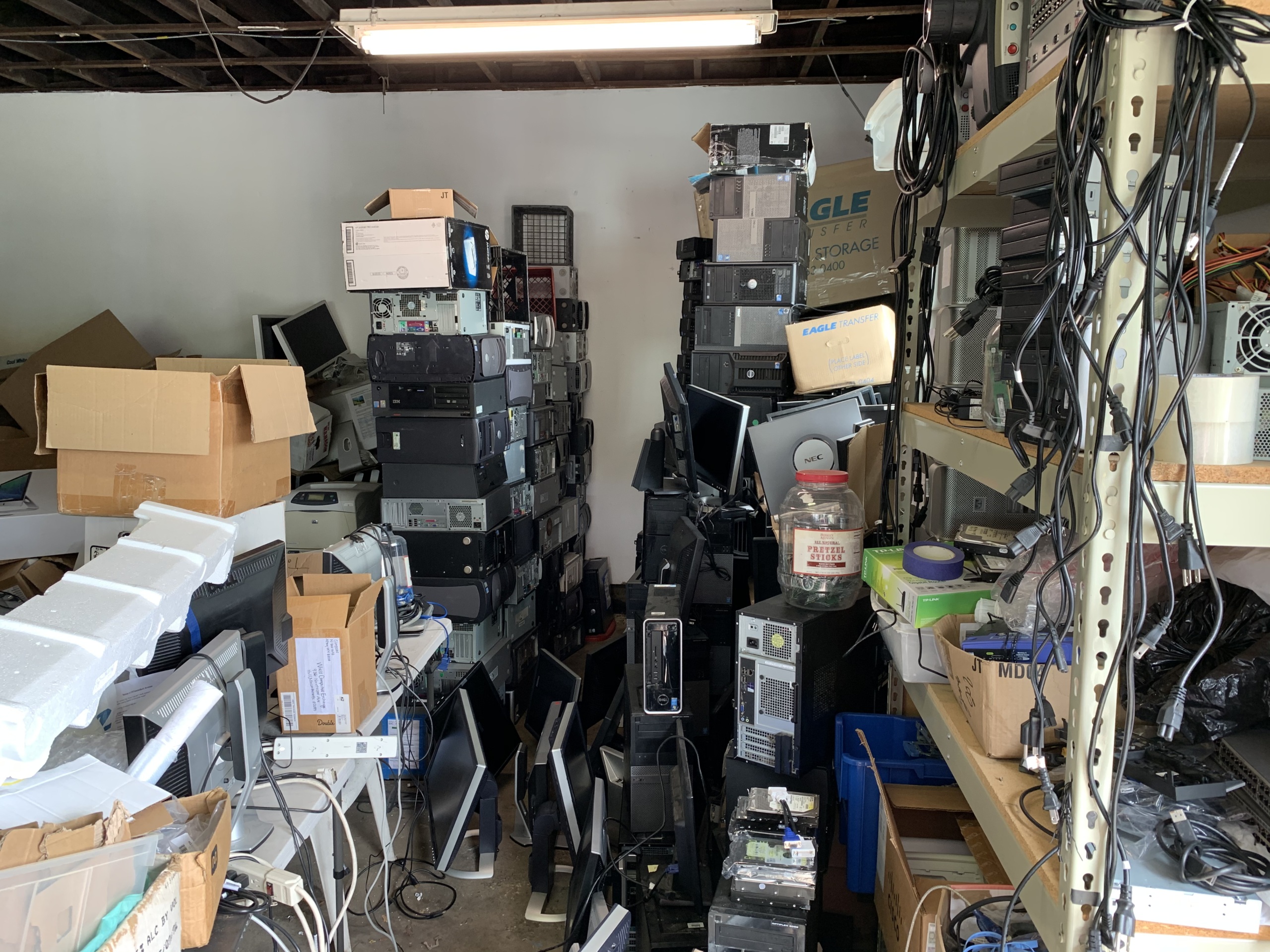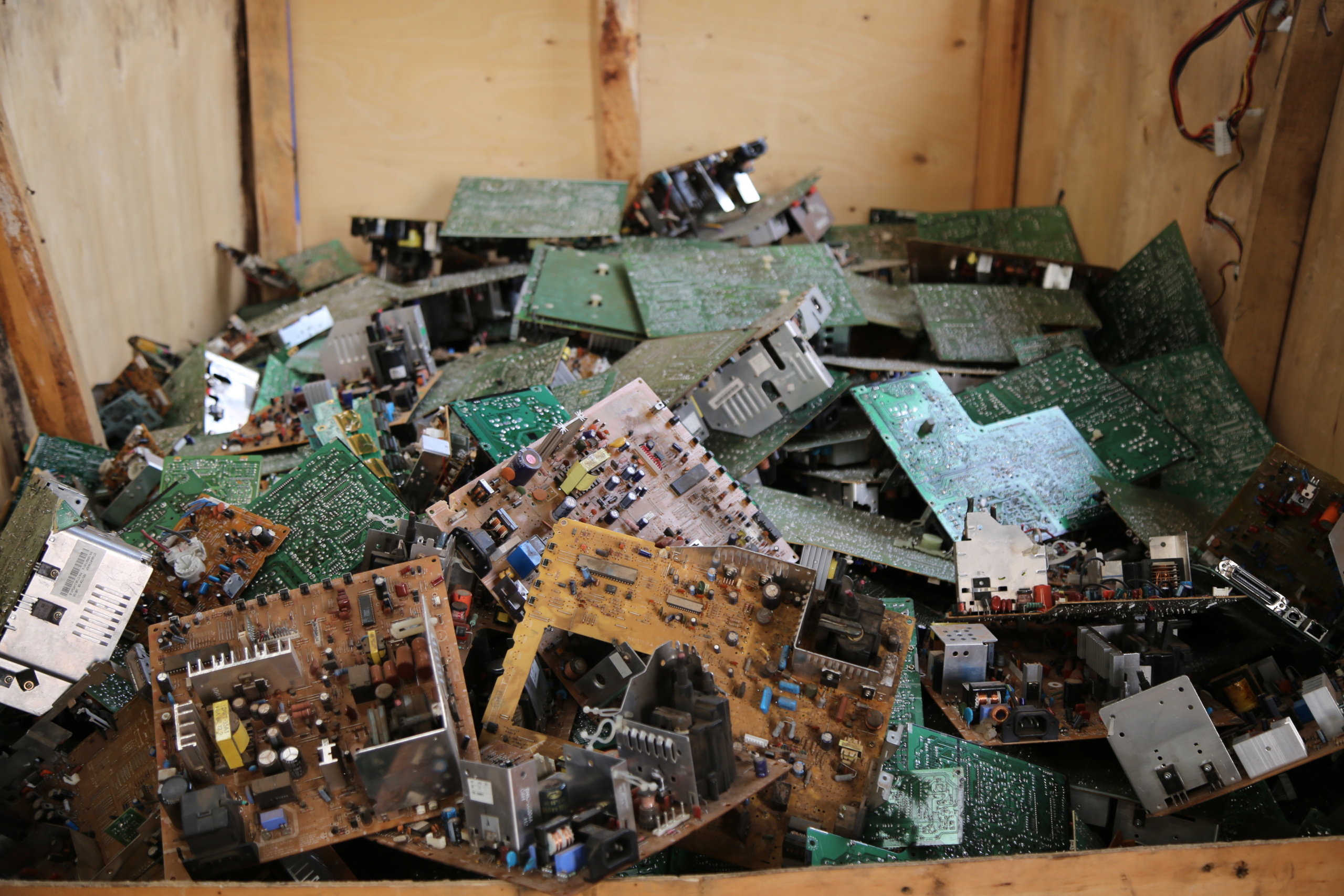
Right to Repair: here, there and everywhere
Right to Repair — the campaign that aims to help us fix our devices and repair our broken relationship with electronics — got started as a state legislative effort. Today, it has its sights set much higher than that.
As state campaigns advance, Right to Repair spreads around the world
 NPR interviews repair advocates in the Georgia statehouse. Picture courtesy of Pedro Ferrer.
NPR interviews repair advocates in the Georgia statehouse. Picture courtesy of Pedro Ferrer.
Right to Repair — the campaign that aims to help us fix our devices and repair our broken relationship with electronics — got started as a state legislative effort. Today, it has its sights set much higher than that.
Our main objective is to pass laws that require manufacturers to give us access to the parts and information we need to fix our stuff. This week will be a significant week for our state legislation — as a number of state’s have important legislative actions and deadlines.
And as we continue to make progress all across the country, we are also seeing a growing international conversation about returning to the values of repair. More and more people are engaging around the world, and working to address the ways that companies actively prevent us from fixing our stuff.
Right to Repair continues to spread internationally
Unfixable electronics, and the electronic waste buildup they create, is a global problem that requires a global solution. Over the last year — and even just over the last two weeks, our campaign’s global footprint has expanded. A minister of parliament in Ontario, Canada introduced Right to Repair legislation just last week. That same week, Gay Gordon-Byrne of Repair.org spoke at a conference in Ottawa to discuss Right to Repair for those in agriculture.
In Europe, governments are taking initial steps toward making products more repairable. In particular, interest is growing in the United Kingdom, with London-based Restart Project leading the way. Last week, BBC radio ran a segment on Right to Repair, part of increasing media visibility for the campaign there.
Over this weekend, on the other side of the world, Australian media highlighted some burgeoning Right to Repair advocacy taking place there. Australian farmers are also readying to take on the equipment companies, with the leader of the National political party calling for Right to Repair reform, and the federal government moving ahead with reforms for automobiles.
Up to 18 states have active Right to Repair bills so far this year
Since my last update, two new states have introduced Right to Repair legislation — Georgia and Missouri. There are more pending — we expect at least 20, and potentially more (but won’t spill all our secrets here!).
U.S. PIRG has been working in the states to build grassroots support for Right to Repair in several ways. Currently, we have organized coalitions to push for Right to Repair in nine states. I am also working to organize issue and advocacy trainings for non-profits involved in repair and repair businesses. The free user-generated online repair website iFixit has been hosting a YouTube town hall style podcast to highlight Right to Repair. Their third Repair Podcast aired Thursday, and featured repair technicians still in high school, including one of our leading Michigan advocates, Surya Raghavendran.
All this activity speaks to one of our key strategies for Right to Repair: To give our growing online audience more ways to get involved, join in coordinated activities, and learn the ropes of issue organizing.
My own repair horror story sparks new effort
I bought a washing machine in the fall of 2017. Two weeks ago, it started to have issues. I assumed the warranty would protect me, but it turns out that the company warranty is just one year. The selector knob only works for two of its five settings, and the company that sold me the machine wants me to wait a week, and charges $99 to walk through the door, plus whatever the fix will be, which they won’t try and troubleshoot on the phone. I like to know what I’m getting into when I hire someone to repair, and I think most people do too.
Another “authorized” repair tech talked me through the possible issues, and said a replacement control panel is a $175 part, and the total cost to fix would be $375. That’s more than half what I paid for the device.
I checked iFixit. The problem is likely caused by a ribbon cable that gets loose because washing machines shake (in case you hadn’t noticed). So if I go through the trouble of destacking them, I can probably fix myself in 10–20 minutes just by re-attaching the cable.
I started telling people my story, and I began to hear stories from people in return. So, I’ve decided to start collecting stories here, and will use them to help make the case for Right to Repair.
Do you have a story of an outrageously expensive repair? Share your repair horror stories here.
Right to Repair clears first hurdle in Washington State
For the second year in a row, a Right to Repair bill has passed out of committee in Washington state, and now heads to the Rules committee. If it clears that hurdle and is scheduled for a full House vote, it will be the first such vote for a Right to Repair bill since Massachusetts passed automobile Right to Repair in 2012, which aimed at preserving your ability to take your car to the mechanic of your choice by requiring greater access to repair manuals and diagnostics.
WashPIRG’s Elise Orlick has been leading the efforts there, and this week will be important for us to continue to demonstrate the broad public support for Right to Repair in that state.
It’s a big week Right to Repair all over the country
Apart from Washington, there are also Right to Repair hearings set in Georgia (today at 2 pm ET) and Minnesota (Friday at 8 or 9 CT), and a committee in New Hampshire is set to decide their bill’s fate this week after a very contentious hearing last month.
Campaigns are ongoing in many other states — from Oregon to Illinois to Massachusetts.
Customers clearly want the ability to repair their stuff, and the widespread support is growing. After Apple shares fell in response to news that iPhones sales had dipped (due in part to more people fixing their phones), I noted:
With every step forward, we continue to demonstrate to the companies that make our electronics that we want to fix them. This week, we have a chance to send that message loud and clear.
Topics
Authors
Nathan Proctor
Senior Director, Campaign for the Right to Repair, PIRG
Nathan leads U.S. PIRG’s Right to Repair campaign, working to pass legislation that will prevent companies from blocking consumers’ ability to fix their own electronics. Nathan lives in Arlington, Massachusetts, with his wife and two children.
Find Out More

Why do we toss working devices?

6 surprising facts from the UN’s 2024 electronic waste report

Unsubscribe: Refusing to pay to use what we own


